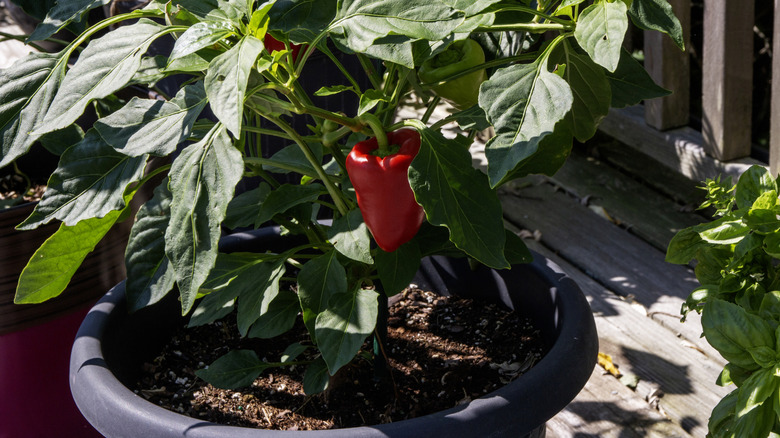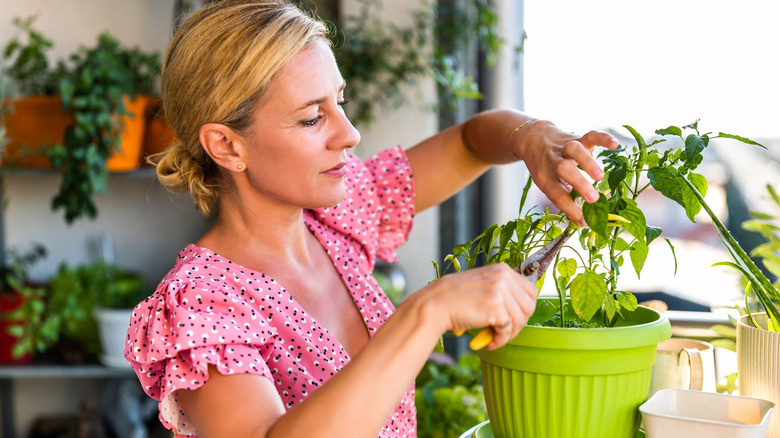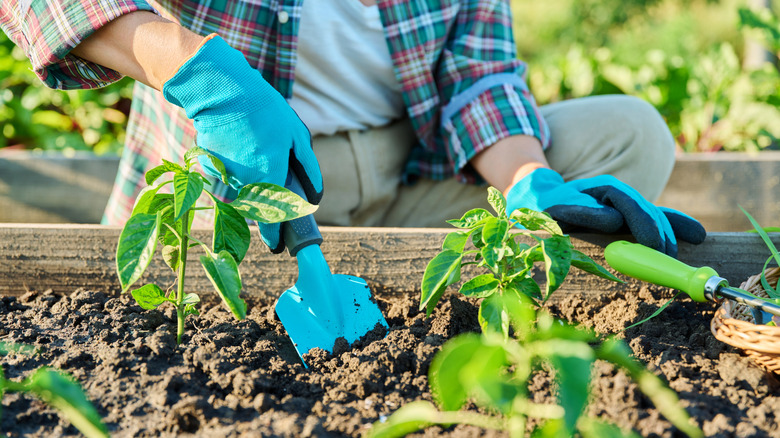How To Help Your Pepper Plants Survive Winter So They Thrive Come Spring
Most people consider peppers (Capsicum annuum) as an easy plant to grow, as long as the soil and sunlight are ideal. This is helpful because, in colder climates, they're annuals that can't survive freezing temperatures, meaning you have to replant them each spring. Once you have some strong plants that are producing the perfect peppers, though, you might prefer to take steps to protect them through the winter, allowing you to have a head start with the same plant the following spring. Gardeners in warmer locations (USDA zones 9 through 11) will be pleased to know, however, that peppers are actually perennial and will survive for many years out in the garden.
If you'd like to protect your pepper plants from the cold, you have the option of overwintering them indoors. Overwintering means you put the plants in pots and move them inside to protect them from low temperatures. By doing this, you can enjoy a shorter time to fruit production in the following growing season. On the other hand, if you put new seeds in the ground in the spring, they can take one to six weeks to germinate. You should also have a stronger harvest after overwintering your existing plants compared to starting with seeds in the spring.
If you already have experience working with some of the other plants that need to be overwintered before temperatures drop, you probably have an idea of what you'll need to do to overwinter your peppers. However, pepper plants can benefit from some special treatment and techniques when overwintering that we'll discuss.
How to decide whether to bring pepper plants indoors
Preparing your pepper plants to survive the winter requires some time and effort on your part. Failing to put in the necessary time could result in mistakes being made when overwintering your plants, and they could weaken or even die. Of course, pepper plants will die if left outdoors in freezing temperatures, so you aren't really risking anything but your time and effort by overwintering them indoors.
In areas with nighttime temperatures regularly below 50 degrees Fahrenheit, the plants will experience stress that affects growth and fruit production. They will die once temperatures fall below 30 degrees. Temperatures never reach freezing as far south as zone 11, which is only found in small parts of southern California and Florida. If you rarely receive frost, which is common in zone 10, you might be able to get by with a frost cloth for the occasional cold snap.
If you decide to overwinter, you'll only want to choose your strongest and healthiest pepper plants. Those that you select should be free of pests and disease to reduce the risk of spreading these issues to your other indoor plants. If the plant's makeup is dense and compact, it should have a better chance at successfully overwintering. Generally, chili and hot pepper plants do perform better after overwintering compared to sweet and bell peppers, which may struggle the following growing season. Additionally, if you have a rare variety of pepper, saving it through overwintering is beneficial compared to starting over.
How to overwinter your favorite peppers (and then replant them)
If the pepper plants are already growing in pots instead of in the ground, it's far easier to overwinter them. You could just move the pot indoors. If you'd prefer to save some space, it's possible to downsize the plant into a smaller container before bringing it inside. You might need to trim some of the roots a little before doing this. For pepper plants that are in the ground, keep as much of the root balls intact as possible when digging them up. Use fresh potting mix in appropriately sized pots when replanting them.
If you'd like the plant to keep producing fruit and growing, place the pot in an area with bright light and continue watering and fertilizing it, and it should keep growing and producing fruit. It may need 12 to 16 hours of light to continue growing, so you may have to add a grow light. The indoor temperature should be consistently between 60 and 70 degrees for the best results. Only water the overwintering plant sparingly to avoid root rot. Let the top of the soil dry out before adding more water.
You can also remove the leaves to prevent pests from riding on the plant indoors and to force it to go into dormancy, as it can benefit health-wise from having a period of rest while overwintering. To promote dormancy, keep the plant in cool temperatures of 50 to 60 degrees and with only a little sunlight. After successfully overwintering your pepper plants, the best time of year to replant the peppers in your garden is a couple of weeks after the last frost.


